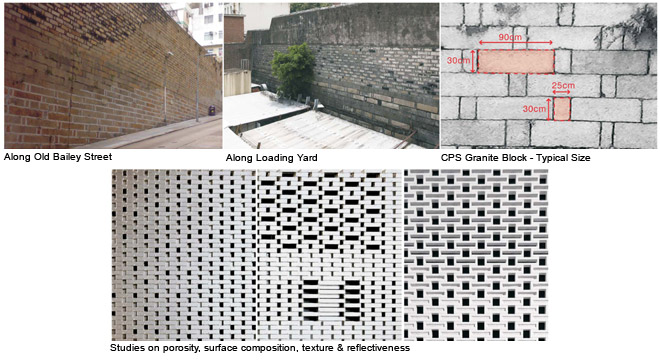Introduction
| Consideration of Alternatives > Design of the New buildings | |||||||||
The height of the new buildings conforms to the imposed height limit of 80 mPD for any new buildings on the upper platform area in the Draft Sai Ying Pun and Sheung Wan Outline Zoning Plan (OZP) S/H3/24. The new buildings are intended to house facilities such as gallery, multi-purpose space, as well as food and beverage (F&B) outlets. Two design schemes have been identified:
These schemes were evaluated taking into account their ability to satisfy the demand for the cultural and mechanical plant spaces needed, the level of intervention at the existing historic buildings, integration with other buildings at the upper courtyard, engineering constraints and the potential environmental impacts. Although the scale and building mass of Scheme A is smaller than that of Scheme B, Scheme A is shortcoming in that if F Hall is to be taken alone to function as a top international gallery, drastic alterations that would compromise its heritage value would be needed: the Laundry Yard would require extensive architectural and structural alterations and strengthening to make it minimally workable multi-purpose space, and the space on top of the new building would be insufficient for the necessary cooling towers and chillers to provide the chilled water for the whole Site. On the other hand, Scheme B offers several merits, including the new building along Old Bailey Street (the Old Bailey Wing) will have a bulk size substantially effective to meet multiple demands that is vital to the revitalisation and long term sustainability of the Site; the Arbuthnot Wing provides an excellent multi-purpose space; the Arbuthnot Wing allows a complete deck of plant space for cooling towers and chillers; and the Arbuthnot Wing will work well with the D and E Halls. Hence, having considered and balanced the demand for the cultural space needed, the level of intervention within the existing historic buildings, integration with other buildings at the upper courtyard, engineering constraints and the potential environmental impacts while achieving the vision of the Project, the implementation of Scheme B is more preferable. Architectural Style and Massing of the New BuildingThe architectural style to be adopted could broadly take either a historical or a modern approach. The use of a modern approach over a historical approach has been recommended for the following two key considerations:
The massing and style of the new buildings was dictated by the zoning envelope and height restriction set for potential new buildings under the OZP and the internal space (floor area and ceiling height) needed for the proposed uses. The design takes the approach to set back from the maximum building envelope so as to minimise disturbance to the adjacent historic buildings and leave them intact. The new buildings have allowed approximately 1.5m setback from the adjacent historic buildings. Hence, in terms of the massing of the building, it is compatible in terms of both visual and cultural heritage perspective. Façade Treatment of the New BuildingDifferent façade treatments have been considered for the new building. These include a fully glazed façade, a corten metal panel façade, a polished aluminium metal panel façade and a cast aluminium unitized façade. A fully glazed façade was considered but rejected because of the apparent lack of association with the immediate building material fabric as well as the potential to pose glare impact. A corten metal panel façade was also considered but rejected because of concerns weather-related premature aging. A polished aluminium metal panel façade was also considered but rejected over the potential for glare impact. A cast aluminium unitized façade system has been considered suitable for the new building. Such proposal was the results from a study of existing site material textures and scales, such as porous masonry, traditional brick and granite wall constructions. The versatility of aluminium in terms of texture, malleability, light weight, lifecycle and general aesthetic makes it the preferred material for the distinctive integration of new construction within the historical heritage compound. The composition of the new building façades will register their respective interior layout and general façade technical requirements.
|
